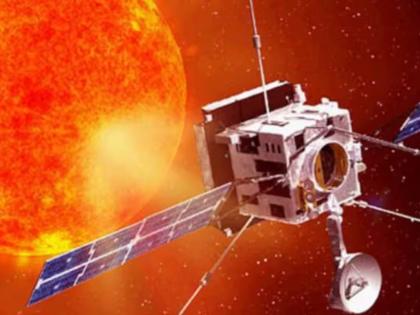ISRO completes launch rehearsal of Aditya-L1 solar mission
By Lokmat English Desk | Updated: August 30, 2023 15:35 IST2023-08-30T15:34:49+5:302023-08-30T15:35:12+5:30
The Indian Space Agency has completed the launch rehearsal and crucial checks ahead of Saturday's high-profile launch of the ...

ISRO completes launch rehearsal of Aditya-L1 solar mission
The Indian Space Agency has completed the launch rehearsal and crucial checks ahead of Saturday's high-profile launch of the nation's maiden Sun-observing mission. Titled 'Aditya-L1', the mission is meant to travel 1.5 million kilometres away from the Earth and observe the sun from an orbit around the obstruction-free vantage point known as Lagrangian Point 1 or L1. This mission is travelling barely 1 per cent of the 150 million kilometre Earth-Sun distance. During a launch rehearsal, the entire process of the countdown is carried out in a simulated manner. The vehicle health checks, fuel filling processes, and monitoring of various technical parameters associated with the rocket and satellite are carried out. The purpose of a countdown is not just about the clock ticking away. Instead, the primary purpose of the countdown is to ensure that the specified tasks are carried out perfectly within the stipulated time period. A series of tasks and safety measures have to be undertaken in preparation for the launch and that is what happens during the countdown. The launch rehearsal is a simulation of this entire process.
The Aditya-L1 mission is slated for lift-off on Saturday noon, 2nd September, at 11:50 am Indian time. The PSLV rocket in its XL configuration stands at the first launch pad of India's Satish Dhawan Space Centre Spaceport. According to ISRO, placing the spacecraft at the L1 point provides a greater advantage of observing the solar activities and their effect on space weather in real time. The spacecraft carries seven payloads to observe the photosphere, chromosphere and the outermost layers of the Sun (the corona) using electromagnetic particle and magnetic field detectors. Using the special vantage point L1, four payloads directly view the Sun and the remaining three payloads carry out in-situ studies of particles and fields at the Lagrange point L1, thus providing important scientific studies of the propagatory effect of solar dynamics in the interplanetary medium.The Aditya L1 payloads are expected to provide the most crucial information to understand the problem of coronal heating, coronal mass ejection, pre-flare and flare activities and their characteristics, dynamics of space weather, propagation of particles and fields etc., ISRO said. The launch of Aditya-L1 comes barely 10 days after ISRO successfully soft-landed the Chandrayaan-3 craft near the Lunar South Pole, thereby making India the first nation to do so.
Open in app